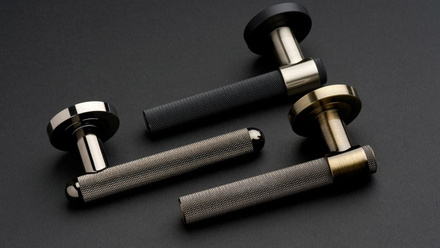
This guest blog from the Timber Trade Federation’s Chief Executive, David Hopkins, reveals it’s not just the humans on site that need care and attention.
Observing Public Health Guidelines on building sites means more than giving your colleagues on site some extra space. Your timber supplies need a little TLC too, if they’re to be in useable condition in case they have to be stored on site for longer than usual.
The mantra for storing all timber products is keep it flat, keep it dry and keep it level. The temptation is to try to get away without using so many bearers, but it’s a false economy. Bearers need to be of equal size, and placed on a firm, level and dry surface, with centres around 600mm-800mm depending on the product. Even roofing battens (tiling battens or slatings) need to be well-supported, with plenty of laths to promote air flow and prevent sagging.
The necessity to keep timber products dry is something that won’t be lost on experienced builders, who recognise that timber is a natural material and can, in the wrong conditions, distort and become unusable. If at all possible, joinery timbers, carcassing, and CLS/studding intended for interior use should be kept under cover in a dry but well-ventilated space, if you need to store them for any length of time. Wrapped MDF profiles must also be kept in dry storage, with care given to protecting their surface.
For sheet materials keeping them inside in a dry environment is essential, as many will be damaged by the presence of moisture while in temporary storage. They should also be kept away from wet trades on site and situations where wet plaster is drying. Generally the thinner the sheet, the more bearers should be used to support it. Bearers in subsequent stacks on top should also be directly aligned with those at ground level.
Carcassing will fare better outside but even this needs a cover to keep off the worst of the rain and sun. Keep the wrapping on until you need to use it. When you do, it’s best to retain the wrapper and staple a batten to the longest edge of the wrap to keep it covered, replacing each time you remove some material from the stack, thus keeping both sun and rain at bay. Carcassing that is stored wrapped and outside needs to be on bearers on a firm, level surface which doesn’t accumulate water.
Trussed rafters and products like I-joists need special handling. I-joists must be stored on level ground and undercover. Trussed rafters, if stored vertically, need bearers positioned at the locations where support would have been provided in the roof design, stacking against a safe, firm support. For horizontal storage, position level bearers under each truss node to prevent any deformation or distortion.
Higher-value products need more attention, and probably also a layer of security, such as placing them in a dry, well-ventilated, secure location. Door casings or linings, engineered timber window frames and doors, and engineered timber flooring, are examples of products that could be prioritised for secure storage.
You can access more advice directly from the TTF’s builders’ merchant and product manufacturing members by visiting their website.





